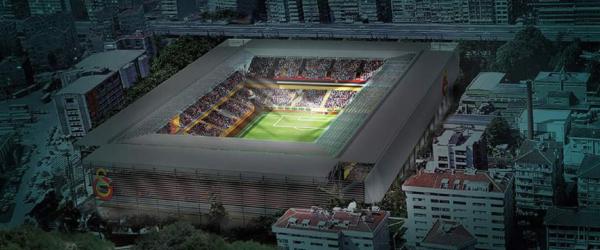
Some months ago, we published a series of old images of stadium proposals that were never realised.
These included, among others, a green Stadion Narodowy w Warszawie, a flexible and convertible Stade de France, and a Stadion Euroborg that had fingers waving towards the city of Groningen. These stadiums in the end all got built, though with different designs.
We have, of course, a lot more old renders in our archives, and in this series we will have a look at some more, but this time of stadiums that are currently (or almost) under construction.
Actually, we start with one that has just been completed, which is the Grand Stade Lille Métropole. It opened almost two weeks ago, but initial plans envisioned a completely different stadium.
In fact, Lille initially wanted to rebuilt their old Stade Grimonprez-Jooris, but plans fell through, and then they decided to build a new stadium at a different site.
On the left the initial plans for the new Stade Grimonprez-Jooris, and on the right the completed Grand Stade Lille Métropole.
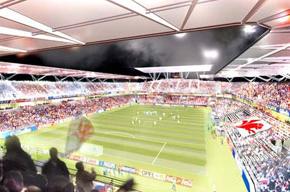 | 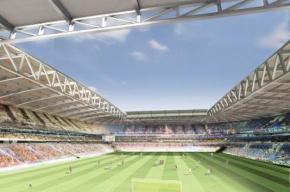 |
I don’t think many Lille fans now regret having had to wait a little longer.
We stay in France for the next comparison, which is another stadium that recently opened, that is, Le Havre’s Stade Océane.
The initial plans are far more similar to the final result than in the case of Lille, but there are still some noticeable differences. The characteristic blue exterior, for example, was not there yet in the initial plans, though the roof structure was impressive nonetheless.
The old render again on the left, and the final on the right.
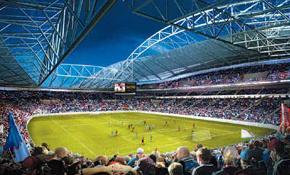 | 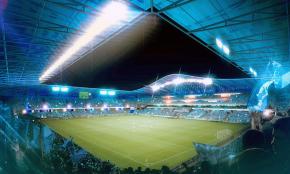 |
The next two renders are of a stadium currently under construction, though there is still some time to go before completion. They are of Spartak Moscow’s new Spartak Stadium, which the club hopes to move into in 2014.
Spartak has gone all long way trying to build a new stadium, mostly delayed by funding issues, and it is therefore no wonder that designs change at some point.
Their earlier designs had quite the spectacular roof structure, but in the end the club went for a more conventional solution.
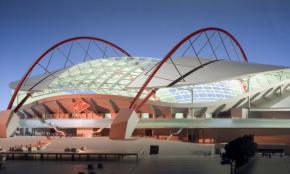 | 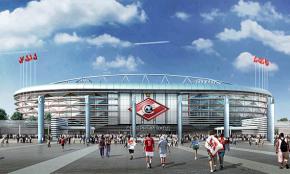 |
Others that had their fair share of problems realising a new stadium were KAA Ghent. The plans of the Belgian side go back to the early 2000s and at one point looked like this almost castle-like stadium. They too, in the end went more conventional and are now building the shiny Arteveldestadion on the right.
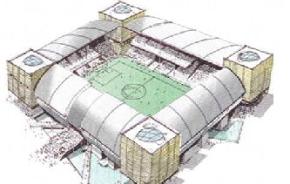 | 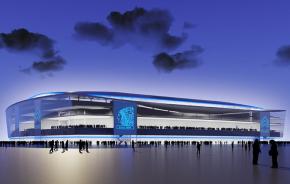 |
Then there is the club that started building, but stopped building halfway, and has yet to resume. They are, of course, Valencia. Actually, we could have chosen out of about twenty different proposals, though most were once submitted as part of a design contest.
The design that was once current is shown on the left, the present one of architects Arup on the right. Valencia has a tendency to only present renders of the exterior, but even then the differences are very obvious.
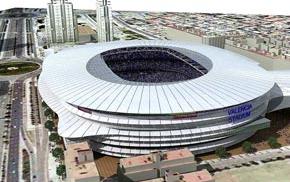 | 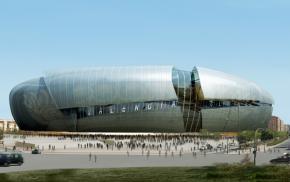 |
Valencia may soon resume construction of the Nuevo Mestalla, and it may actually be that the design gets changed once again, though no-one ever really knows with Valencia.
One stadium that is progressing steadily is Rubin Kazan’s new stadium. The New Kazan Stadium is scheduled to open in 2013 and the renders as well as construction photos look impressive. The earlier designs, not so much.
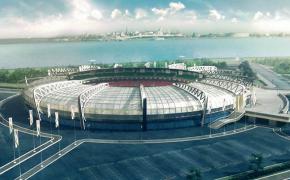 | 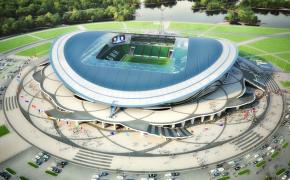 |
Works have not started yet on Bristol Rovers’ new stadium, though the club did recently receive planning permission.
The UWE Stadium will be built at a site in the north of the city of Bristol, though the club had initially hoped to build a new stadium in the place of the present Memorial Stadium. These plans turned out to be unattainable, and local residents can now rejoice at the arrival of a Sainsbury’s supermarket to the neighbourhood.
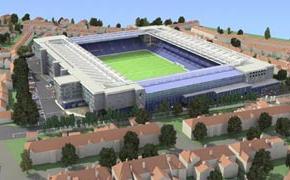 | 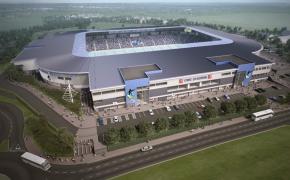 |
Finally, a stadium that will open in October with a Swedish Moments night, will have the England national team as a guest for the opening match, and then be the venue of three concerts of the Swedish House Mafia. That is, of course, the Friends Arena in Stockholm.
The Friends Arena will replace the Råsunda Fotbollstadion as Sweden’s national stadium, will be the home of AIK, will be very multifunctional, and have a capacity of 50,000 seats.
It is quite comparable with Grand Stade Lille Métropole, or with the VELTINS-Arena, but designs used to be a little more extravagant with four large masts.
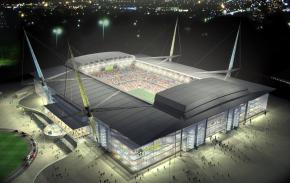 | 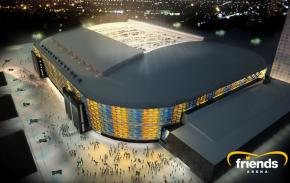 |
There are quite a few photos on the Friends Arena Facebook page that are worth having a look at.
And the photo on top of the page? That was once a proposal for a new stadium to replace Galatasaray’s Ali Sami Yen with. But in early 2011, Galatasaray moved into the brand new Türk Telekom Arena instead.
There is much more where these renders came from, and in the next series we are going to have a look at stadiums that never got built. This includes, of course, Everton.